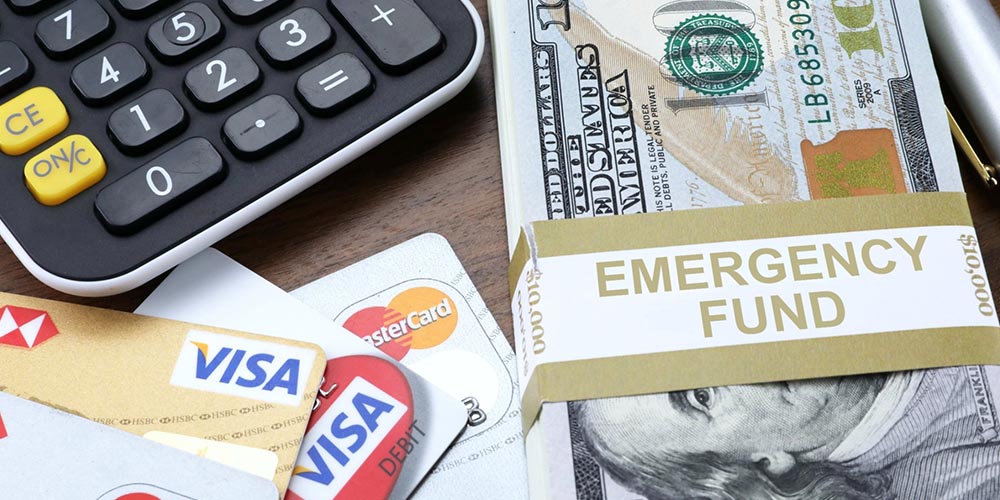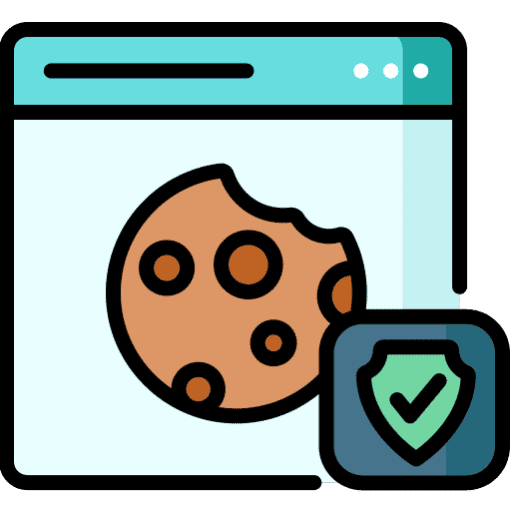Nadie planea tener una emergencia financiera, pero a todos nos ocurre en algún momento. Cuando ocurren, es fundamental contar con un plan sólido que nos ayude a recuperarnos lo antes posible. Una buena forma de hacerlo es crear un fondo de emergencia. Esta cuenta de ahorro específica le dará la tranquilidad de saber que dispone de un colchón de dinero siempre y cuando más lo necesite. En esta entrada del blog, explicaremos qué es un fondo de emergencia y cómo puede empezar a crear uno hoy mismo.
¿Qué es un fondo de emergencia y por qué es necesario?
Un fondo de emergencia es una reserva de dinero para gastos imprevistos. Muchos expertos financieros recomiendan tener un fondo de emergencia que cubra entre tres y seis meses de gastos de manutención. El objetivo es tener suficiente dinero ahorrado para poder capear una tormenta financiera sin endeudarse.
Hay muchas razones por las que un fondo de emergencia es importante. En primer lugar, ayuda a proteger su puntuación crediticia. Si tiene una buena puntuación crediticia, podrá optar a tipos de interés más bajos en préstamos y tarjetas de crédito. Esto puede ahorrarle miles de dólares a lo largo de la vida de un préstamo. En segundo lugar, un fondo de emergencia le da tranquilidad. Saber que tiene un colchón al que recurrir puede ayudarle a reducir el estrés en los momentos difíciles. Por último, un fondo de emergencia puede ayudarle a evitar las costosas comisiones por demora y otras penalizaciones. Si no puedes pagar una factura a tiempo, tener un fondo de emergencia puede darte la flexibilidad de pagarla cuando puedas.
Aunque hay muchas razones para tener un fondo de emergencia, es importante recordar que no está pensado para gastos cotidianos. Lo ideal es recurrir a él sólo en caso de una verdadera emergencia financiera, como la pérdida de un empleo o un gasto médico importante. Con una planificación cuidadosa y disciplina, un fondo de emergencia puede darte la seguridad y tranquilidad que necesitas para capear cualquier temporal financiero.
Cómo empezar a crear su fondo de emergencia - Las Estrategias
Ahora que ya sabes por qué debes crear y mantener un fondo de emergencia, hablemos de cómo crear uno para ti y tu familia. La estrategia para crear uno depende de varios factores individuales, pero aquí tienes nuestras estrategias de cabecera que funcionan una y otra vez.
Estrategia #1: Fijar objetivos
El primer paso debe ser siempre evaluar la situación actual (dónde se encuentra) y hacia dónde quiere ir. Determine cuánto necesita ahorrar en función de sus circunstancias particulares. ¿Es soltero y no tiene personas a su cargo? ¿Tiene pareja y/o hijos? ¿Es propietario de una casa o alquila un apartamento? Responder a estas preguntas le dará una idea más clara de cuánto dinero necesitará para cubrir sus gastos en caso de emergencia.
Una vez que tengas un objetivo en mente, divídelo en partes más pequeñas y manejables. Por ejemplo, si tu objetivo es ahorrar 120.000 euros en dos años, eso equivale a 833 euros al mes. O, si quieres ahorrar $500 en un mes, eso equivale a poco más de $16 al día. Si divides tu objetivo en trozos más pequeños, te parecerá más alcanzable y será menos probable que te desanimes por el camino.
Estrategia #2: El hábito del ahorro
¿Cómo se come una vaca entera? Filete a filete. Si guardas dinero constantemente, crear un fondo de emergencia será mucho más fácil. Si aún no has adoptado la mentalidad de ahorrar con regularidad, aquí tienes algunos consejos clave para crear un hábito de ahorro que te lleve a tu objetivo:
- Sepa por qué: ¿Por qué ahorra? ¿Qué espera conseguir? Tener un objetivo concreto en mente te ayudará a mantener la motivación. Saber tu porqué es siempre la mejor motivación, no sólo para crear y mantener un hábito de ahorro.
- Empezar poco a poco: Si ahorrar te parece abrumador, empieza con una cantidad pequeña y ve aumentándola con el tiempo. $50 a la semana puede parecer más manejable que $200 a la semana. La clave es empezar y coger impulso.
- Hacerlo automático: Una de las mejores formas de facilitar el ahorro es automatizarlo. Transfiera una cantidad fija de su cuenta corriente a su cuenta de ahorro cada semana o cada mes. De este modo, no tendrás que pensar en ello: el dinero llegará automáticamente.
- Controla tu progreso: Lleve un registro de cuánto ahorra cada mes. Esto le ayudará a ver sus progresos y le mantendrá motivado para seguir ahorrando. Ahorrar con regularidad es una de las mejores formas de constituir rápidamente un fondo de emergencia. Si ahorras una pequeña cantidad cada semana, estarás en el buen camino para alcanzar tu objetivo.
- Celebrar los éxitos: Es una gran motivación para crear cualquier hábito. Cuando alcances un hito, como ahorrar $500 o $1000, date una pequeña recompensa. Puede ser algo tan sencillo como comprar un libro nuevo o salir a cenar. La clave está en celebrar tus éxitos, por grandes o pequeños que sean, para mantenerte motivado.
Estrategia #3: Gestión de tesorería
La gestión de la tesorería es una habilidad esencial para cualquier persona, pero es especialmente importante si estás trabajando para crear un fondo de emergencia. Si controlas tus gastos y creas un plan para tu dinero, estarás en una posición mucho mejor para alcanzar tus objetivos de ahorro. Gestionar el flujo de caja significa perfeccionar el momento en que el dinero entra y sale.
El primer paso es conocer sus hábitos de gasto. Lleve un registro de dónde gasta su dinero durante al menos un mes, si no dos. Esto le ayudará a hacerse una idea de adónde va su dinero y en qué áreas puede recortarlo. Por ejemplo, averigüe las fechas de vencimiento de sus facturas de servicios, primas de seguros y otros gastos fijos como su tarjeta de crédito.
Una vez que tenga una idea de sus gastos, podrá empezar a poner en marcha un plan. Cuando sepas que te vas a quedar corto a final de mes, puedes hacer frente a esta situación ajustando las fechas de vencimiento en consecuencia. Así podrás aprovechar las semanas en las que entres más dinero para hacer más mella en tu objetivo de ahorro y cubrir gastos.
Si controla su flujo de caja, podrá gestionar mejor sus finanzas y alcanzar su objetivo de constituir un fondo de emergencia.
Estrategia #4: Aprovechar las oportunidades puntuales
Las devoluciones de impuestos o las bonificaciones anuales suelen considerarse oportunidades únicas. Sin embargo, también puede utilizarlos para ayudarle a alcanzar sus objetivos de ahorro. Si sabe que va a recibir una gran suma de dinero, considere la posibilidad de utilizarla para hacer mella en su fondo de emergencia. Lo mismo puede decirse de cualquier otro ingreso inesperado, como una herencia o un regalo económico.
Ahorrar una oportunidad puntual es una forma estupenda de aumentar rápidamente su fondo de emergencia. Sin embargo, es importante tener en cuenta que no debes confiar en estas oportunidades para financiar todo tu objetivo de ahorro. En su lugar, considérelas una forma de adelantarse o de ayudarle a alcanzar su objetivo más rápidamente.
Estrategia #5: La automatización es tu amiga
Ésta es quizá la forma más sencilla de contribuir a la creación de tu fondo de emergencia: hacerlo automático. Puedes hacerlo estableciendo una transferencia periódica de tu cuenta corriente a tu cuenta de ahorros. De este modo, no tendrás que pensar en ello: el dinero llegará automáticamente.
Otra opción es utilizar un servicio como Digit, que se conecta a tu cuenta corriente y ahorra pequeñas cantidades de dinero automáticamente. Puede ser una buena forma de aumentar tus ahorros sin sufrir demasiado.
El escollo que debes evitar son las comisiones por descubierto. Esta estrategia está relacionada con la gestión de la tesorería, así que asegúrate de comprobar tu saldo y de transferir la cantidad adecuada en el momento oportuno.
Estrategia #6: Utiliza tu sueldo
Otra buena estrategia para ingresar dinero en tu fondo de emergencia es dividir tu nómina. Cuando te paguen, envía automáticamente una parte de ese dinero a tu cuenta de ahorros. Es una forma estupenda de asegurarte de que vas acumulando ahorros sin ni siquiera pensar en ello.
Una cosa que hay que tener en cuenta con esta estrategia es que tienes que asegurarte de que te queda suficiente dinero para cubrir tus gastos. No querrás acabar en una situación en la que no puedas pagar tus facturas porque ya has enviado todo tu dinero a los ahorros. Por lo tanto, asegúrate de hacer un presupuesto acorde y deja un margen de maniobra.
Estrategia #7: Vender algunas cosas extra
Una de las formas más rápidas de conseguir dinero extra para tu cuenta de ahorros es vender algunos de los objetos que ya no quieres. Echa un vistazo a tu casa: ¿tienes ropa que nunca te pones? ¿Tiene muebles que no necesita? ¿Tiene aparatos electrónicos que acumulan polvo?
Si tienes objetos de los que puedas desprenderte, considera la posibilidad de venderlos por Internet o en una venta de garaje. Te sorprendería saber cuánto dinero puedes ganar deshaciéndote de algunas de las cosas que no quieres. Y ese dinero puede ir directamente a tu fondo de emergencia.
Vender los objetos que ya no te interesan es una forma estupenda de despejar tu casa y, al mismo tiempo, aumentar tus ahorros. Así que todos salimos ganando.
Estrategia #8: Side Hustlin' (Buscando trabajo)
Si buscas una forma más sostenible de aumentar tus ahorros, considera la posibilidad de dedicarte a una actividad secundaria. Un trabajo secundario es cualquier actividad que realices fuera de tu trabajo habitual para ganar dinero extra. Puede ser cualquier cosa, desde pasear al perro hasta escribir por cuenta propia o ser conductor de Uber.
Hay infinitas oportunidades cuando se trata de trabajar en negro. Y lo mejor es que a menudo puedes hacerlo en tu tiempo libre. Así que, si buscas una forma flexible de ganar un dinero extra, un negocio paralelo puede ser la solución perfecta.
Estrategia #9: Haz que sea un juego
Ahorrar dinero sólo por ahorrar parece aburrido. Pero, ¿y si lo conviertes en un juego?
Hay varias formas de hacerlo. Una opción es establecer un reto de ahorro en el que intente ahorrar todo el dinero posible en un periodo de tiempo determinado. Otra opción es concederse recompensas por alcanzar determinados hitos de ahorro. Por ejemplo, podrías darte una recompensa de $50 por cada $1000 que ahorres.
Convertir el ahorro en un juego puede ayudar a que el proceso sea más divertido y motivador. Y quién sabe, puede que incluso acabes ahorrando más dinero del que habías planeado en un principio.
¿Cuánto dinero debe ahorrar en su fondo de emergencia?
Muchos expertos en finanzas personales recomiendan tener un fondo de emergencia equivalente a entre tres y seis meses de gastos de manutención. El objetivo de un fondo de emergencia es ayudarle a cubrir gastos inesperados en caso de que pierda su empleo o se enfrente a otro contratiempo financiero.
Aunque entre tres y seis meses de gastos de manutención pueden parecer mucho dinero para ahorrar, es importante recordar que un fondo de emergencia no está pensado para gastos cotidianos. Está ahí para ayudarte a superar un periodo difícil hasta que puedas recuperarte. Si no está seguro de cuánto dinero debe ahorrar en su fondo de emergencia, una buena regla general es empezar con lo suficiente para cubrir tres meses de gastos de manutención e ir aumentando a partir de ahí. Si dedica tiempo a crear un colchón de ahorro saludable, podrá estar tranquilo en caso de una emergencia financiera inesperada.
Hemos enumerado 9 estrategias increíbles para que puedas empezar y crear la mentalidad adecuada. Si ni siquiera puedes reservar dinero para cubrir tres meses de gastos, no hay problema. Empieza con lo que puedas y construye tu fondo de emergencia a tu propio ritmo. No caigas en el error de no crear uno porque sólo puedes ahorrar $50 al mes. Cada granito de arena cuenta y acabará sumando.
Dónde debe guardar su fondo de emergencia
Su fondo de emergencia es su póliza de seguro contra los gastos imprevistos de la vida. ¿Dónde debe guardarlo?
Lo más importante es elegir un lugar seguro y de fácil acceso en caso de que necesite recurrir a él. Una opción es guardar tu fondo de emergencia en una cuenta de ahorro en un banco o cooperativa de crédito. De esta forma, ganarás intereses por tu dinero y podrás acceder a él fácilmente si lo necesitas.
Otra opción es invertir su fondo de emergencia en un fondo de obligaciones a corto plazo. Esto le proporcionará cierta protección frente a la inflación, al tiempo que le permitirá acceder a su dinero con relativa rapidez si lo necesita.
Puede utilizar servicios como PayPal con tarjetas prepago. Se trata de una solución más independiente del uso de los bancos. Sin embargo, puede seguir utilizando la cuenta PayPal como una cuenta de ahorros y añadir o retirar dinero según sea necesario.
Efectivo sigue siendo el rey para muchos de nosotros, así que también puedes optar por mantener tu fondo de emergencia en efectivo. Eso sí, asegúrate de guardarlo en un lugar seguro, como un caja fuerte ignífuga o caja fuerte doméstica.
Independientemente de dónde decida guardar su fondo de emergencia, lo importante es que disponga de uno para poder capear las tormentas inesperadas de la vida.
Cuándo utilizar el fondo de emergencia y cuándo no
Tu fondo de emergencia está ahí por una razón: para cubrir gastos inesperados cuando no tienes dinero a mano. Pero eso no significa que deba recurrir a él para cualquier cosa. Así que, ¿cuándo es apropiado utilizar el fondo de emergencia y cuándo hay que dejarlo estar?
En general, sólo debe utilizar su fondo de emergencia para, bueno, emergencias. Es decir, cosas como la pérdida del trabajo, gastos médicos importantes o desastres naturales. Si puedes cubrir el gasto de otra forma, por ejemplo con ahorros o ingresos de un negocio secundario, no deberías tocar tu fondo de emergencia.
Existen, por supuesto, zonas grises. Si necesita hacer una compra importante que no puede permitirse con su presupuesto actual, pero que no es estrictamente necesaria, puede plantearse utilizar su fondo de emergencia. Eso sí, asegúrate de reponerlo lo antes posible para estar preparado para emergencias reales en el futuro.
No tengas miedo de utilizar tu dinero si lo necesitas. Recuerda cómo construiste tu fondo de emergencia y lo que aprendiste por el camino. Si ya has creado uno antes, puedes reponerlo o incluso volver a crearlo desde cero. Has aprendido unas técnicas de ahorro y gestión del dinero de valor incalculable. Siéntete orgulloso de ti mismo y crea un fondo de emergencia una y otra vez si lo necesitas.
¿Qué opina sobre la creación de un fondo de emergencia? ¿Tiene ya uno? ¿Cómo te sientes sabiendo que estás preparado para lo que te depare la vida? Háznoslo saber en los comentarios.

















